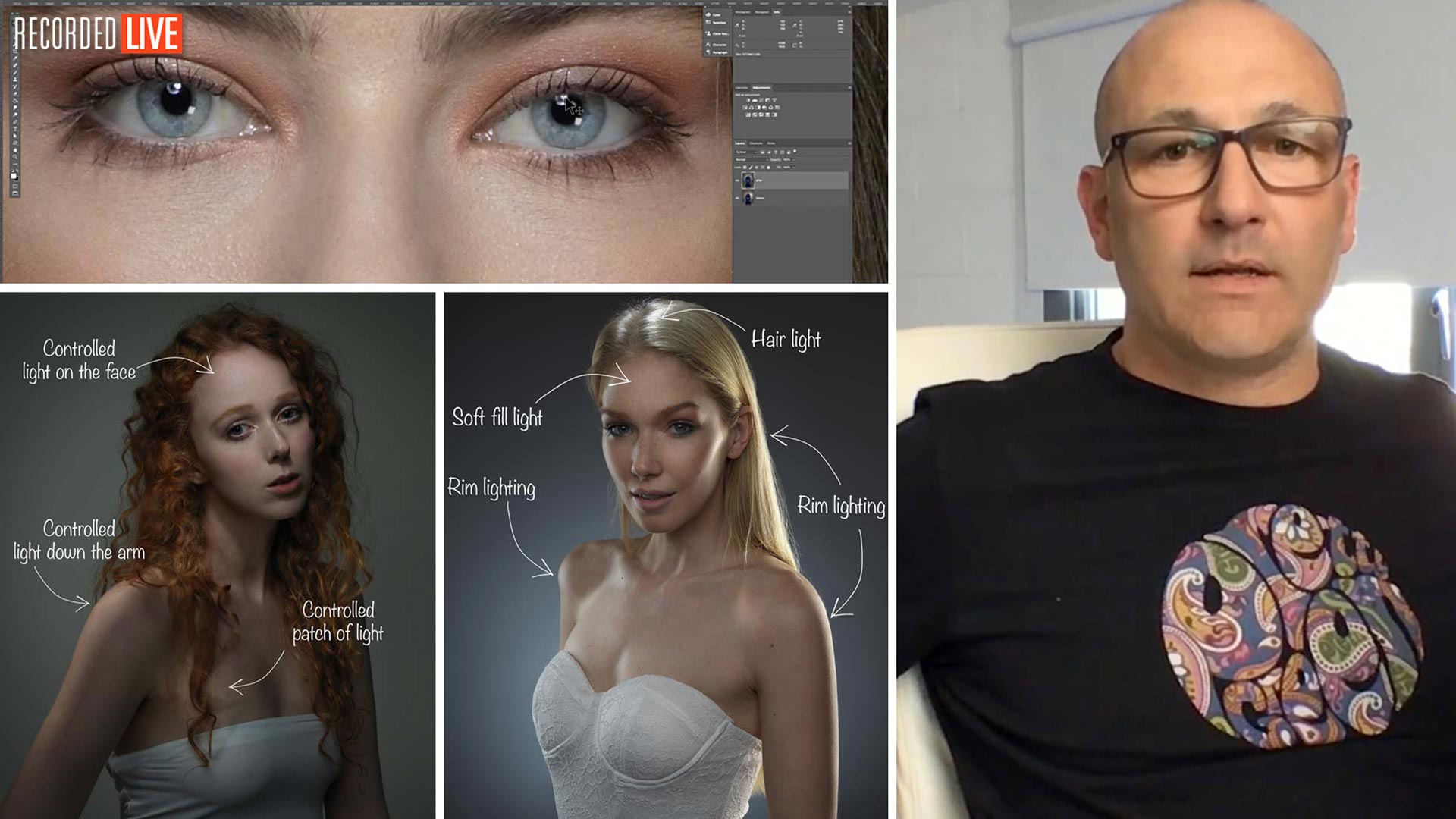Identifying Light in a Photograph (Part 2)
This live show builds on our ‘Identifying light in a photograph’ live show, where Karl explained the importance of being able to identify light in a photo and how this skill can be used to enhance our own photography.
Showing a number of further examples, including portrait, product and fashion images, Karl breaks down the lighting in each, sharing the ‘tools’ we can use to identify light. He explains how, by studying an image, we can determine the direction of the light, size of the light and hardness or softness of the light. He also explains how we can measure exposure without a light meter and why this allows us to be more creative.
Topics covered in this show include:
- The importance of light in photography
- How to identify light in an image
- How to create effective edge lighting
- Portrait lighting setup ideas
- Measuring exposure in photography
- How to identify the direction and size of light in a photo
If you have any questions about this show, please post in the comment section below.


Comments
Hi Karl
Fantastic show, this is like “Lighting Forensic”, clearly you go to great lengths to make every shot perfect, most of us would just throw a bunch of soft boxes here and there. Please do a couple of live shows where you would take any random products and then explain with sketches as to how you will light it up, hopefully by watching all this we can get into a “Karl Taylor” mind set when it comes to lighting.
Two question on the Marc Jacobs eye glass shot,
1, you used a mirror to reflect the gradient back, do you recommend a particular type of mirror? there are acrylic mirrors, glass mirrors, metallic type of mirrors etc, do you recommend a particular type or it does not matter?
2. If the temples of the frame was made up to polished metal rather then plastic, would you still have used a mirror, or in that case you would have used another scrim from the side?
thanks a bunch
Amit
Hi Amit, thank you and on many of the live lighting shows (see some of the replays) that is often what I do, I usually describe what I’m going to do and why but I will keep it in mind more for other future live shows. In relation to your other questions:
1. It doesn’t matter but I use acrylic mirrors as they are lighter and don’t smash when you drop them
2. Yes I would have still used the mirror but it may be angled differently to change the gradient or as in my recent lipstick focus stacking live show it may have been silver card (slightly less reflective) with the ND on it. Please see that show to understand the technique.